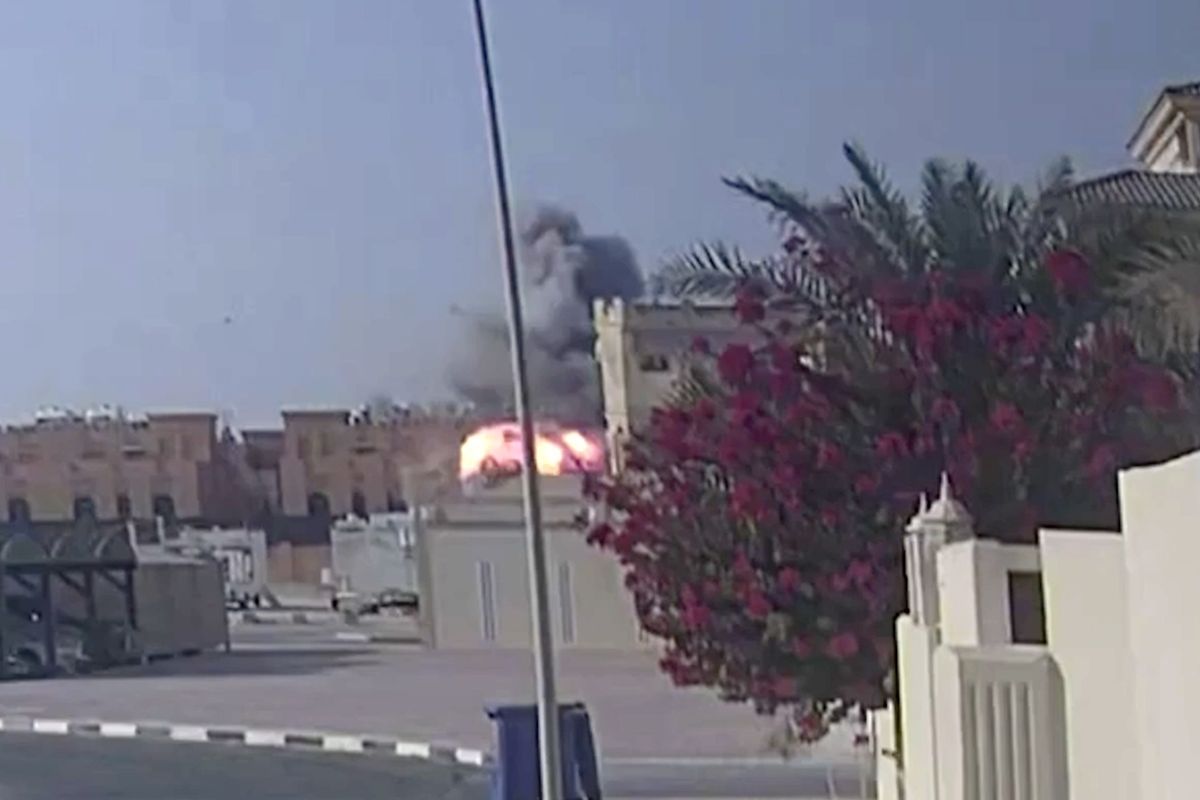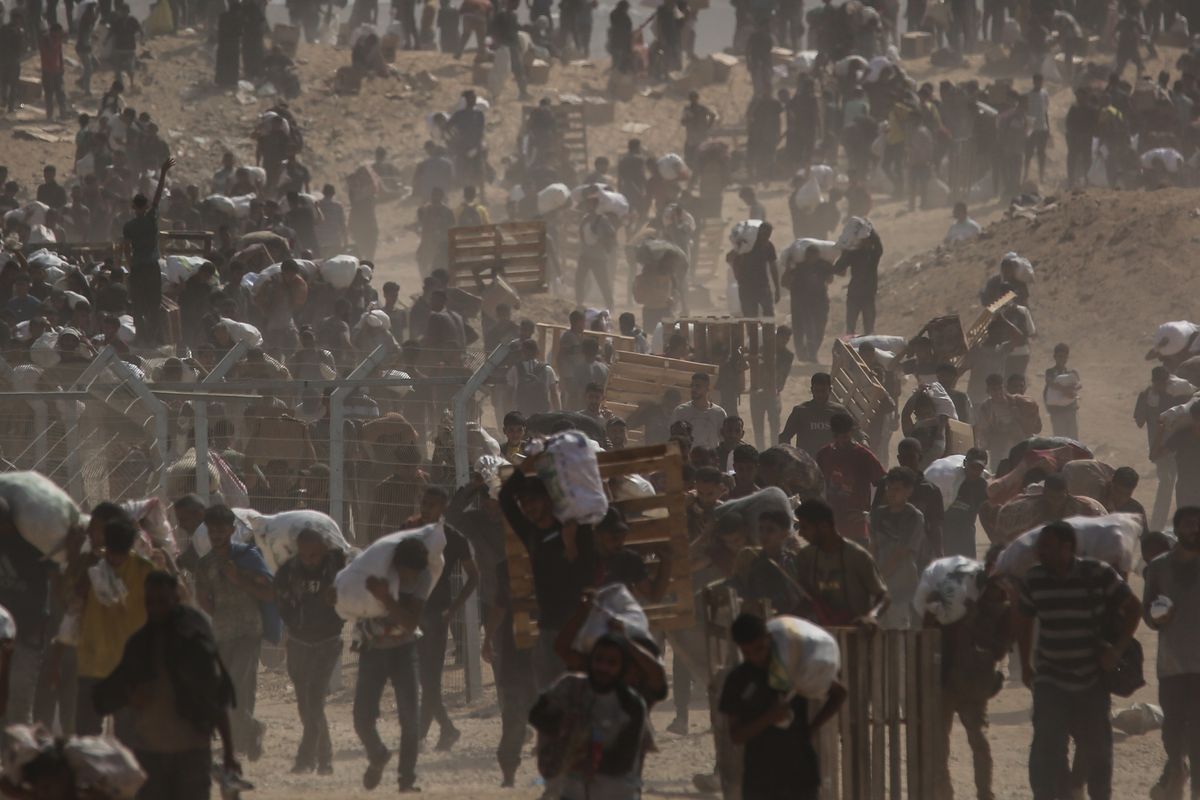SUBSCRIBER+EXCLUSIVE REPORTING – CIA Director Bill Burns is in the Middle East as part of a Biden Administration push to ease tensions in the region amid fears of a broader, more violent regional conflict. The director is reportedly planning to meet with Prime Minister Benjamin Netanyahu and Defense Minister Yoav Gallant, as well as Mossad Chief David Barnea. His trip follows a visit to the region by U.S. Secretary of State Antony Blinken on Friday.
While the CIA does not comment publicly on the director’s schedule, media outlets are citing Israeli officials for details of Burns’ visit in which he is also expected to meet leaders in Qatar and Egypt as well as Jordan and the United Arab Emirates.
Burns’ expected focus, according to those sources, is to be on securing the release of hostages still being held by Hamas while supporting the Biden Administration’s focus on limiting the number of civilian casualties as the result of Israel’s ground invasion.
“While the Biden Administration wants to help Israel achieve its security objectives concerning Hamas, the optics of U.S. aid to Israel are creating a pronounced international backlash against the U.S.. Opinion in the Islamic world is becoming increasingly anti-American to a point not seen in decades, said Karl Kaltenthaler, Director of the Center for Intelligence and Security Studies at the University of Akron. “I do not see U.S. policy changing toward supporting Israel in any significant way, but there are certainly efforts on the part of the Biden Administration to convince the Israeli government to exercise caution in its military operations. There are also diplomatic efforts by the U.S. to convince governments in the Islamic world that this is not a war against Muslims, and that the United States is very serious about trying to help Palestinians with humanitarian aid.”
After weeks of artillery and aerial bombardment of Gaza that followed Hamas’ bloody terrorist attack inside Israel on October 7, Israeli President Benjamin Netanyahu has warned of a “long and difficult” campaign.
“Clearly, the Israelis have carefully planned how to best execute the ground operation so as to best achieve their objectives of destroying Hamas strongholds and freeing the hostages that Hamas is holding while not diving headfirst into major urban fighting,” Kaltenthaler, told The Cipher Brief. “But that is likely to come.”
It's not just for the President anymore. Cipher Brief Subscriber+Members have access to their own Open Source Daily Brief, keeping you up to date on global events impacting national security. It pays to be a Subscriber+Member.
While the IDF, from a military perspective, is far superior to Hamas’s militant wing both in formal training and equipment – which includes airpower supremacy – an incursion of the strip is tactically a considerable challenge. The U.S.-designated terrorist outfit, which governs the densely populated area of around two million people, has over the years, amassed an extensive labyrinth of hundreds of miles of deep tunnels, traps and hideouts in which to hide, plant mines and explosives and launch surprise attacks. As Israel’s visceral bombing campaign over the years has decimated much of Gaza, the rubble provides cover for Hamas operatives.
But the biggest headache for Israeli military planners, experts say, is constituting a battle plan that will bring home the two hundred plus hostages. Hamas has demanded the release of at least six thousand Palestinian prisoners in Israeli jails, indicating that it is using the hostages as pawns for broader negotiations.
Israeli troops also have to contend with Hamas’s willingness – and readiness – to fight back. “Our capabilities have developed,” Usama Hamdan, a senior Hamas official in Lebanon, vowed. “The Israelis can’t turn back time.”
The militant group is believed to have spent more than two years plotting its surprise killing spree inside Israel last month and has likely braced for an exhaustive retaliation.
Israel’s ground operation marks the first such intrusion since the blistering “Operation Protective Edge” in the summer of 2014, which lasted for fifty days. The heaviest fighting in the urban showdown took place when Israeli forces pushed into the rubbled enclave of Shijaiyah, and Hamas operatives fired an anti-tank missile at a broken-down Israeli armored personnel carrier, killing all seven soldiers inside. One of the bodies was dragged away by Hamas militants and never returned. Subsequently, Israeli warplanes quickly dropped one hundred, one-ton bombs on the small area along with firing six hundred shells – a searing example of the intensity many analysts expect to come. By the end of the war, six civilians and 67 soldiers in Israel lost their lives, while a further 1600 were wounded. On the Palestinian side, over 2,250 Palestinians were reportedly killed, including 1462 civilians, and more than 11,200 severely injured – at least ten percent were rendered with a life-altering, permanent disability.
According to Kaltenthaler, the situation now is poised to worsen in the days and weeks to come.
“The fighting will intensify in Gaza. It is unlikely that the Israeli government is conducting a limited ground operation. Israeli ground forces will push deeper into central and then southern Gaza. The casualties will mount on both sides, and the fighting will become more difficult for Israeli forces,” he surmised. “Despite these difficulties on the ground, and increasingly louder calls from many in the international community for the Israelis to halt ground operations, the Israeli government will persist with the ground operations to destroy Hamas command and control and capacity to strike Israel.”
What does victory look like for Israel?
“We have set two goals for this war: To eliminate Hamas by destroying its military and governing abilities, and to do everything possible to bring our captives home,” Netanyahu has stated.
The IDF has said hostilities can end only in the case of a complete surrender of Hamas and the return of the hostages.
“The aim here is to totally dismantle Hamas from its military capabilities. If that can be done from the air, and with standoff measures, with very limited exposure to our troops and less damage on the ground, that would be great,” IDF spokesperson Jonathan Conricus told ABC Radio Melbourne.
The death toll for this war is believed to have already surpassed the four previous conflicts combined. Casualties on both sides are expected to mount significantly, exacerbating the breadth of a humanitarian catastrophe for Gazans under Israeli bombardment. Supplies of fuel, food, water and medicine are running out, with only a small number of aid trucks able to enter.
The war in Gaza has also raised tensions and violence in the West Bank and runs the risk of expanding fighting along the Israel-Lebanon border and incentivizing other armed groups to join the fray. Saudi Arabia has warned of a spillover that could threaten the entire Middle East and a refugee crisis that neighboring countries are not adequately equipped to handle.
Adding to the chaos and uncertainty is the notion that even if Israel were to prevail in its stated objective to eliminate the Hamas regime, it is not clear what would come on the ominous “day after.”
“I am not entirely convinced that there is an endgame plan. It would seem that the Israeli goal is to eradicate Hamas as a threat and set up some other governance structure in Gaza,” Kaltenthaler noted. “That will be a massive lift for the Israelis to accomplish. Who would become the new rulers of Gaza? The Palestinian Authority? That’s a possibility, but will the remnants of Hamas in Gaza then wage an insurgency against the Authority? That is a distinct possibility.”
However, he also stressed that The Palestinian Authority at present has very limited legitimacy among the population.
“I think the option of Israel re-occupying Gaza and governing it themselves is being considered but is likely viewed as unpalatable,” he added. “The chances of Israel being able to pacify Gaza and not face an insurgency are low.”
Read more expert-driven national security insights, perspective and analysis in The Cipher Brief because National Security is Everyone’s Business.












